Two tales in two cities, one American and one Chinese, testify to the shared humanity that binds us all.
To dispel the gloom of the day, there is nothing like a heartwarming true story. Make it two stories, a perfect pair, as a matter of fact, that took place across the Pacific Ocean almost simultaneously.
On Nov 15, San Francisco turned into Gotham when 5-year-old Miles Scott, in remission from leukemia, donned the Batkid cape and went around the City by the Bay performing superhero deeds. Thousands came out to play along and cheer him on.
On the same day, in the Chinese city of Yinchuan, a 114-hour citywide search came to fruition when the missing external piece of a very expensive hearing aid belonging to a 4-year-old girl surnamed Song was found. The deaf girl's parents are migrant workers and failure to find the lost part would not only mean another expenditure to the tune of 280,000 yuan ($45,900) but also another operation for an implant in her skull.
Both stories brought tears to my eyes. However temporarily, they suspended the cynic in me and made me believe in humanity again.
The two stories share a lot of similarities: Both children are victims of ill health of a congenital nature, and in the Chinese girl's case the circumstances were exacerbated by her family's economic difficulties. Both incidents involved tens of thousands of ordinary people and were facilitated by the technology of social media. So, it was not just one good-hearted person reaching out to a poor kid, but two whole cities in community spirit turning out to help someone who effectively became a symbol of all those who need help.
Most remarkably of all, the two stories had the perfect balance between spontaneity and organization. Yes, the stories of the kids touched a universal chord, but there were people behind the scene who were instrumental in making them into events. In the case of the American kid, Make-A-Wish Foundation is known for arranging experiences for children with life-threatening medical conditions. And a local marketing company helped build the news into a groundswell through Twitter. To recover the hearing aid for the Chinese girl, local news organizations devoted pages to it and local government agencies blogged about it.
These organizations lent much-needed authenticity to the cases. There are thousands of “For help” notices online and in the early days of weibo, the popular micro blog service in China, celebrities would use their clout and retweet them to spread the word. But very often they did not have the time and ability to verify the claims. It takes just one scam to pour water onto the fire of public compassion.
This doesn't just happen in China. When people create an avalanche of goodwill by opening their hearts and wallets to help those less fortunate, as in the aftermath of a massive natural disaster, there are always a handful of bad apples who want to take advantage of the public mood. So, a verification mechanism is needed. News organizations or the police or NGOs like Make-A-Wish can perform this task. The more credibility it has, the less suspicion there will be from the public about its announcement.

 Luxury-cars parade held in Dubai
Luxury-cars parade held in Dubai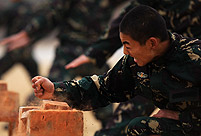 Special forces take tough training sessions
Special forces take tough training sessions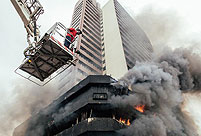 Fire guts 22-storey Nigeria commercial building in Lagos
Fire guts 22-storey Nigeria commercial building in Lagos Self-made farmer billionaire donates 69 villas at hometown
Self-made farmer billionaire donates 69 villas at hometown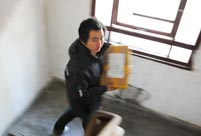 A courier's crazy
A courier's crazy 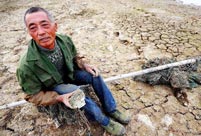 Severe drought hits China's largest freshwater lake
Severe drought hits China's largest freshwater lake Top 10 celebrity moms in China
Top 10 celebrity moms in China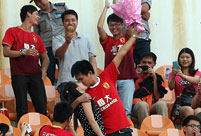 Weekly Sports Photos:
Weekly Sports Photos: Gingko leaves turn brilliant golden yellow in Beijing
Gingko leaves turn brilliant golden yellow in Beijing Maritime counter-terrorism drill
Maritime counter-terrorism drill College students want partner for sex needs
College students want partner for sex needs Male belly dancer in women’s fitness club
Male belly dancer in women’s fitness club  15 best rivers for travelers in world
15 best rivers for travelers in world National Geographic Traveler Photo Contest
National Geographic Traveler Photo Contest Weekly Sports Photos
Weekly Sports PhotosDay|Week|Month